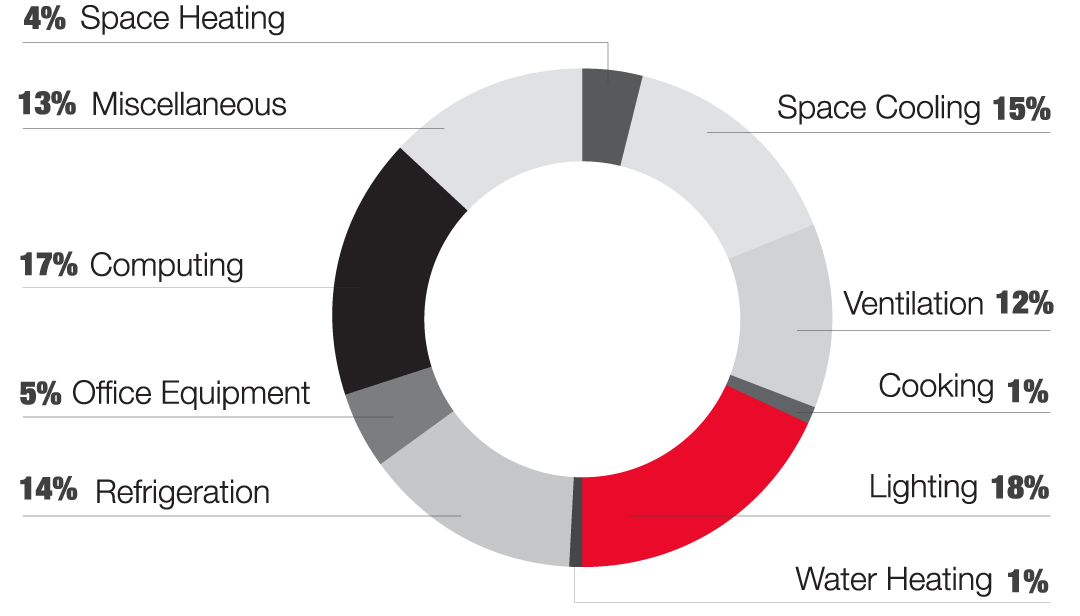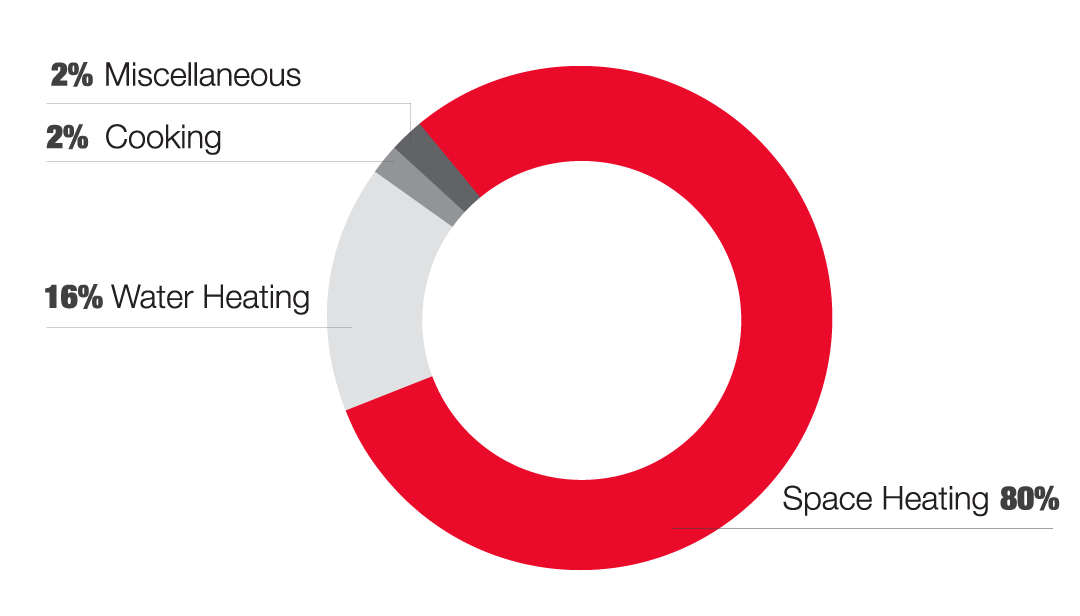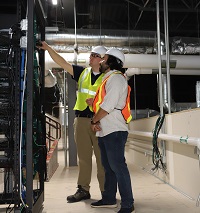Get an A+ in energy savings at your school
Did you know the average K-12 school in the Midwest spends over $30,000 per year on electricity and natural gas? Find out how your school compares to others or explore ways to save energy and money with no-cost, low-cost and capital improvements. Bundling upgrades and saving on improvements is easier than ever with the Small Business Express program, which connects your school with qualified contractors and rebates to create lasting energy efficiency savings.
What uses the most energy in K-12 schools
The following pie charts illustrate what school activities use and cost the most. Space heating, cooling, and ventilation, and lighting account for the largest portion of energy use in schools. Electricity end uses (from the top, counterclockwise): 4% space heating, 13% miscellaneous, 17% computing, 5% office equipment, 14% refrigeration, 1% water heating, 18% lighting, 1% cooking, 12% ventilation and 15% space cooling. Natural gas end uses (from the top, counterclockwise): 2% miscellaneous, 2% cooking, 16% water heating and 80% space heating.
Electricity End Uses

Natural Gas End Uses

What's costing schools the most
| End Uses | Average Electric Cost/Month | Average Gas Cost/Month | Energy Savings Potential |
|---|---|---|---|
| Space Heating, Cooling and Ventilation | $633 | $531 |
Moderate
|
| Computing and Office Equipment | $449 | - |
Moderate
|
| Lighting | $368 | - |
High
|
| Refrigeration | $286 | - |
High
|
| Water Heating | $20 | $106 |
Low
|
Small Business Express is here to lend a hand
Small Business Express makes it easy for you to get professional guidance to identify energy-saving opportunities. Eligible rebates can help lower your out-of-pocket cost to replace failing equipment, and help you save energy and money long term.
Ways to Save

Heating equipment is one of the largest energy users in schools. By upgrading the heating and cooling equipment, your students and staff will see improvements in comfort.
- Simple: Seal around windows and doors with new caulk and weather stripping every few years to prevent energy loss and maintain comfort. Keep blinds or curtains closed during the day in warmer weather and keep them closed at night in colder weather to keep the heat inside.
- Low cost: Complete a building tune-up analysis to ensure mechanical equipment is operating efficiently. Install programmable thermostats to reduce heating and cooling load outside of school hours.
- Capital investment: Replace heating and cooling equipment with new energy efficient equipment.

Over $400 a month is spent in computing and office equipment energy use for schools. For some schools, cooking and serving food can also be a large energy expense.
- Simple: Manage the computer network to ensure computers go into low-power or “sleep” mode after a period of inactivity.
- Low cost: Add controls to vending machines to limit their energy use when not being used, such as outside of school hours.
- Capital investment: Upgrade to ENERGY STAR certified equipment, such as ENERGY STAR ovens, fryers, steamers, hot food holding cabinets, refrigerators and freezers.

Lighting
Lighting in schools is important for students and teachers alike. Lighting typically costs schools $368 per month!
Lighting in schools is important for students and teachers alike. Lighting typically costs schools $368 per month!
- Simple: Turn lights off when a space is not in use.
- Low cost: Install motion sensors to turn lights off for areas where lights may be left on for extended periods of time.
- Capital investment: Replace fluorescent lights with LEDs to see savings of up to 50%! In gymnasiums and auditoriums, replacing high bay lights will save on energy as well as maintenance costs due to the longer life span of LEDs. Replace exterior lights with LEDs to save even more.

Even a simple change in the water heater temperature can reap large benefits – each 10°F reduction in water heater temperature can save 3-5% in water heating costs.
- Simple: Lower your water heater temperature to 120°F and install low flow faucet aerators and pre-rinse spray valves.
- Low cost: Install a water heater jacket on tank-type water heaters and add pipe insulation to all accessible hot water piping.
- Capital investment: Replace older water heaters with high-efficiency models; look for natural gas water heaters with a Thermal Efficiency of 0.825 or greater.

See how your school compares
Energy Use Intensity (EUI) is a common measure used to benchmark a building’s energy use as a factor of its size. To calculate EUI for your school, total your electric bills for one year, then divide by your building’s square footage; repeat for natural gas. If the score is lower than those listed below, you are using less energy than most.
|
Average EUI for K-12 schools in the Midwest
|
|
|---|---|
|
Electricity
|
Natural Gas
|
|
9.8 kWh/square foot
|
0.33 therms/square foot
|
Call us today at 800-432-8583 to learn about tools that can help you with benchmarking your facility.
Other Resources